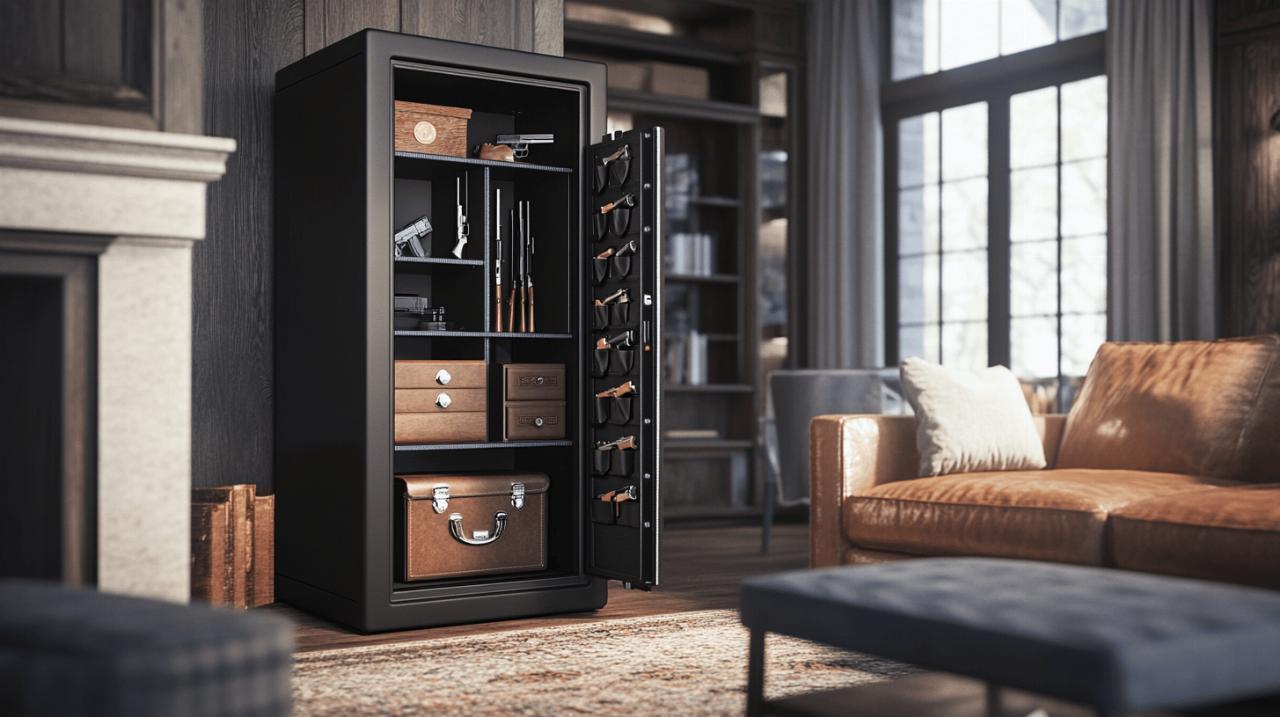Proper firearm storage is a critical responsibility that every gun owner must take seriously. When implemented correctly, safe storage practices protect not only your immediate family but also prevent unauthorized access that could lead to theft or tragic accidents. This comprehensive guide explores essential strategies to secure your firearms while maintaining reasonable access for home defense or sporting purposes.
Understanding Secure Storage Solutions
The foundation of responsible gun ownership begins with implementing proper storage solutions. The Home Office Firearms Security Handbook provides detailed guidance on securing firearms to prevent unauthorized access. These aren’t merely suggestions—they’re often legal requirements tied to certificate conditions that mandate firearms and ammunition must be stored securely. Many homeowners find that visiting https://www.casajedo.es/ provides additional insights into integrating security solutions that complement home design while maintaining high safety standards.
Storage Options for Different Types of Firearms
When selecting storage solutions, consider the specific requirements for your firearm collection. Purpose-built gun cabinets conforming to BS7558 (1992) standards provide excellent baseline security. These cabinets should be firmly secured to structural elements of your home—walls, floors, or joists—to prevent removal. For handguns, smaller safes with mechanical or electronic locks offer convenient yet secure options. Larger collections might warrant dedicated gun rooms with reinforced doors, specialized locks, and potentially alarm systems that notify you of unauthorized access attempts.
The security level should align with your specific circumstances. Basic gun cabinets might suffice in low-risk environments, while high-risk situations might necessitate monitored intruder alarms and more sophisticated security measures. Remember that ammunition requires separate, secure storage—preferably in a lockable compartment away from the firearms themselves to create an additional barrier to unauthorized use.
Balancing Accessibility with Security Measures
One of the most challenging aspects of firearm storage is striking the right balance between security and accessibility. For home defense purposes, you need reasonable access to your firearm during emergencies while ensuring it remains inaccessible to unauthorized users. Modern storage solutions address this dilemma through quick-access safes with biometric technology, allowing rapid retrieval by authorized users while maintaining robust security against unauthorized access.
Keys to gun cabinets should be stored in secure locations, with combinations changed regularly. Consider utilizing combination safes for storing cabinet keys, creating multiple layers of security. Regardless of your chosen storage method, firearms should always be unloaded when stored, with ammunition kept separately. This simple practice significantly reduces accident risks while adding another layer of protection against misuse.

Creating a Family Safety Plan
Safe storage represents only one component of comprehensive firearm security. Developing and implementing a family safety plan ensures everyone in your household understands proper protocols and responsibilities. This plan should include clear guidelines about who may access firearms, under what circumstances, and the procedures for doing so safely. Regular family discussions about firearm safety foster a culture of responsibility and vigilance.
Teaching Children About Firearm Safety
Statistics indicate that approximately 55% of gun owners with children do not practice safe firearm storage, creating significant risks. Even with secure storage solutions, educating children about firearms remains essential. Age-appropriate discussions should emphasize that real guns differ dramatically from those portrayed in video games or movies. Children should learn never to touch firearms without adult supervision and to immediately inform an adult if they encounter an unsecured weapon.
Educational approaches should be straightforward yet comprehensive, avoiding creating mystique or curiosity around firearms. The message should consistently emphasize that firearms are tools with specific purposes, not toys, and require proper respect and handling. These conversations should occur regularly, reinforcing safety principles as children mature and potentially adapting the message to their developing understanding.
Emergency Protocols for Household Members
Every household member should understand emergency protocols related to firearms. This includes knowing what to do if they encounter an unsecured weapon, how to respond if someone requests access to your firearms, and procedures during home emergencies. Clear communication prevents confusion during high-stress situations and ensures everyone responds appropriately to potential safety risks.
Consider implementing additional safeguards during periods of increased risk. Research shows that approximately 82% of adolescent firearm suicides involve a family member’s gun, highlighting the importance of temporary storage options during personal crises. Voluntary temporary gun storage with trusted friends, relatives, or appropriate facilities provides an additional safety layer during vulnerable periods. Some communities offer storage programs specifically designed for temporary safekeeping during mental health challenges or family crises.
By combining secure storage solutions with comprehensive family education and clear protocols, you create multiple layers of protection against firearm-related accidents and misuse. This holistic approach to firearm security protects your loved ones while fulfilling your responsibilities as a gun owner, creating peace of mind without compromising your ability to access firearms when legitimately needed.
